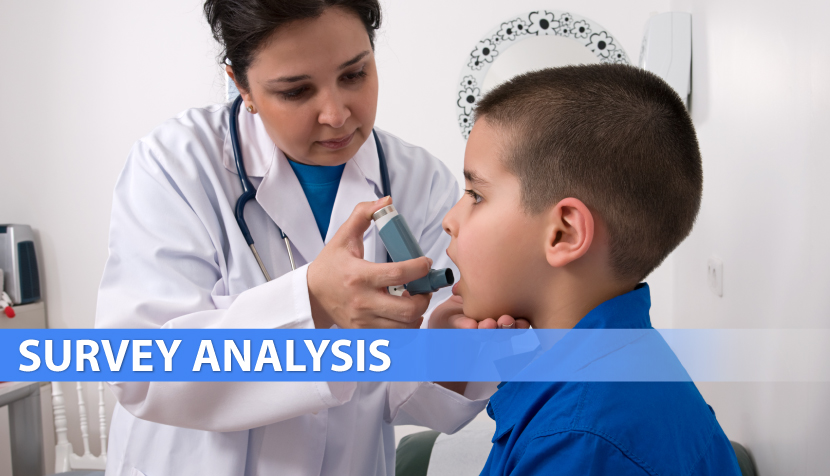
Asthma is caused by a combination of genetic and environmental factors. Pulmonologists observe a direct correlation between environmental factors like climate change, air pollution and rapid urbanization, and the rise in asthma cases across the world. The disease has grown to become a major public health problem in the recent years. Moreover, its affliction is not restricted to the developed nations anymore.
According to WHO, Indians account for about 15 to 20 million of the total asthmatics in the world. A significant number of them report a high frequency of exacerbations leading to functional and emotional limitations. Moreover, about 15% succumb to the illness each year. Under-recognition of the disease’s severity and under-treatment are the main reasons for the associated mortality and the high economic, social, psychological and physical burden in the country.
The prevalence of hypersensitivity to allergens like pollens, food, dust, etc., especially among children, is on the rise in India. Although one-fourth of the population suffers from allergic diseases, people often dismiss them as a non-serious condition. Poor management of allergies and continued exposure to allergens often lead to an asthma attack. It is, therefore, necessary to initiate measures for creating awareness around the various types of allergens.
Docplexus’ latest survey unravels Indian physicians’ approach toward the diagnosis and management of this chronic health condition. It is a part of a series to bridge the communication gap between doctors and pharma/medical device/diagnostic companies.
Survey Details
Aim – To understand the most preferred ways of assessing and treating asthma cases and doctors’ information requirements regarding the same.
Survey Methodology – Nationwide online poll on Docplexus’ users.
Sample Size – The survey was administered on 75 physicians. 50 of them completed it. A majority of the respondents belonged to the general medicine and general pediatrics stream.
Survey Results

Following are the main findings:
- Wheezing is the single-most important indication of asthma for doctors – 33% of the doctors voted for wheezing as the main symptom leading them to suspect an asthma case. A wheeze in early childhood could be an indication of asthma in adult years. Chronic cough (26%) and dyspnea (23%) were the other two important indications. Persistent cough accompanied by labored breathing that worsens at night or early morning is a common complaint in asthmatics. 18% of the respondents voted for exercise intolerance, which is often considered to be a symptom of undertreated asthma.
- Clinical manifestation is the most trusted diagnostic method – A majority (44%) of the doctors rely on clinical observation as the primary diagnostic method. A typical asthma case presents itself as shortness of breath, chest tightness, wheezing, and recurrent cough. Atopic or extrinsic asthma is associated with eczema or other reactions linked with hypersensitivity. In addition to the normal treatment approach, this asthma type necessitates actions to eliminate the responsible allergens.
Apart from clinical manifestation, 24% of the doctors used peak flow meters and 21% used spirometers to confirm an asthma case. Peak flow meters are more preferred as they are cheaper and easier to use.
A skin test may be prescribed by the physician if he/she suspects allergies to be the cause of asthma symptoms. A high level of the molecule, immunoglobulin E (IgE), in the body is indicative of an allergy. However, only 9% of the respondents chose skin tests as a primary diagnostic method. One reason for this could be the high cost of allergy profiling (Rs.4000-5000). Sputum examination was not chosen by any doctor to diagnose asthma.
- Inhaled corticosteroids foremost in control of asthma – Over half of all doctors chose inhaled corticosteroids for managing asthma. These preventive medicines are usually taken twice a day. They work better, hence are more preferred than non-steroid preventers such as nedocromil. However, a mere 2% chose corticosteroid injections. This may primarily be due to the serious side effects of systemic medicine as it travels throughout the body. 39% of the respondents chose inhaled salbutamol, a reliever and highly effective bronchodilator. It is the commonly prescribed for occasional asthma symptoms.
A prominent medication used in case of anaphylaxis (severe allergic reaction) is epinephrine. In several countries, epinephrine auto-injectors are prescribed to be used by allergic patients in case of emergencies. However, they are not available in India. The rising affliction of allergy-induced asthma in the country could initiate the widespread use of epinephrine auto-injectors like EpiPen, in coming years.
- Ketotifen and Cromolyn Sodium least preferred for uncontrolled mild asthma – Ketotifen, an antihistamine, is usually effective when combined with other medications to treat allergy-induced asthma. However, its efficacy cannot be generalized for all asthmatics. Therefore, only 2% of the respondents voted for Ketotifen as a reliable pharmacotherapeutic approach for uncontrolled mild asthma.
Cromolyn sodium also enjoys limited popularity (8%) among physicians. Most doctors (43%) find inhaled corticosteroids more effective than cromolyn sodium as the first-line therapy for persistent asthma. However, cromolyn sodium is not without its advantages. It permits the dosage of corticosteroid to be lowered in case of steroid-dependent asthmatics. Also, it is the chosen alternative when patients are reluctant to take steroids.
The second most-preferred (27%) line of treatment is long-acting beta-agonists. In most cases, long-acting beta-agonists are administered along with an inhaled steroid. This treatment approach has been observed to be highly effective.
Next Survey – Managing Osteoporosis
Past Surveys
Survey #5: Management of Invasive Fungal Infections in India
Survey #4: Evaluating the Need for Awareness about Pediatric Vaccines
Survey #3: Assessing the Risks of Different Cardiovascular Diseases in India
Survey#2: Indian Doctors’ Opinions on Removal of Orthopedic Implants
Survey #1: What Doctors feel about Antibiotics Misuse
